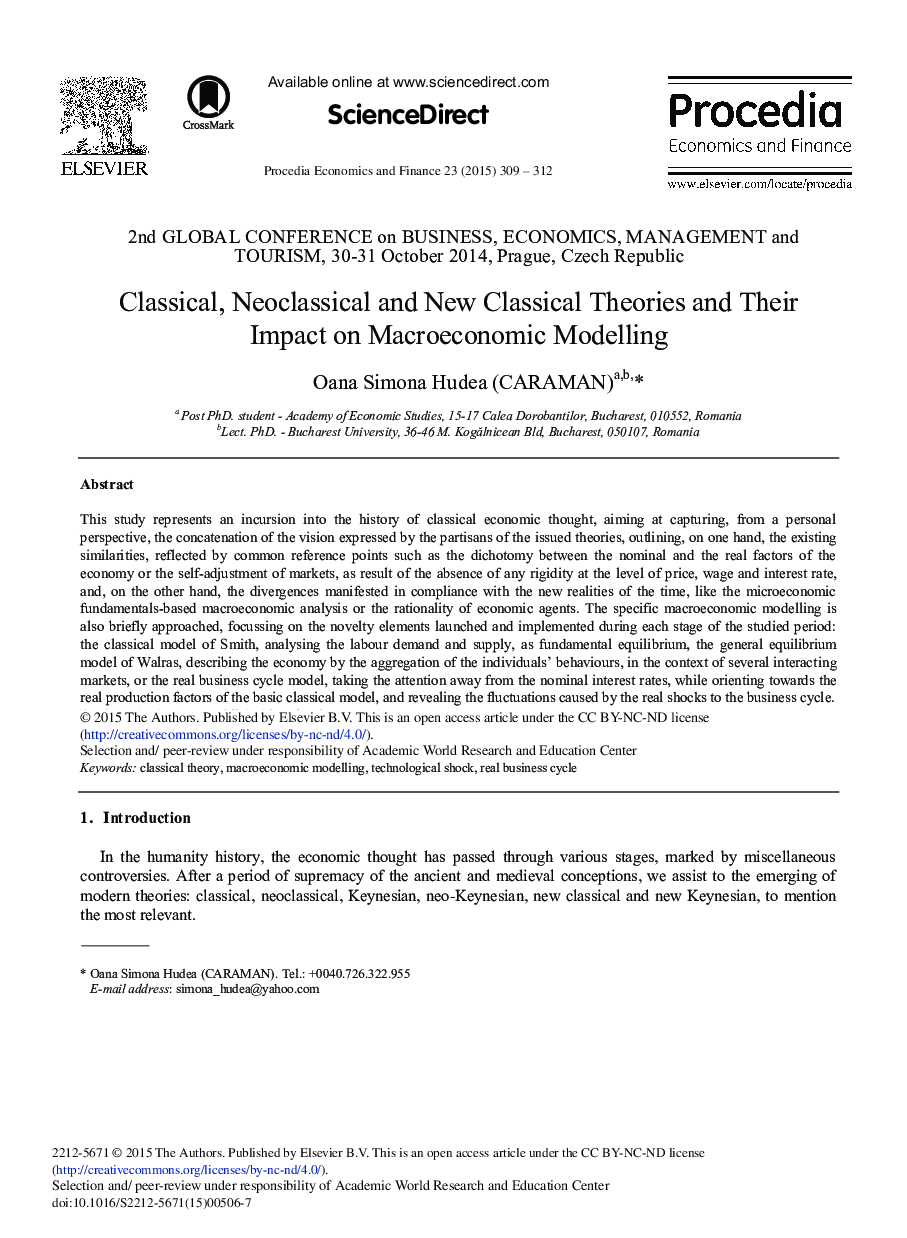| Article ID | Journal | Published Year | Pages | File Type |
|---|---|---|---|---|
| 981408 | Procedia Economics and Finance | 2015 | 4 Pages |
This study represents an incursion into the history of classical economic thought, aiming at capturing, from a personal perspective, the concatenation of the vision expressed by the partisans of the issued theories, outlining, on one hand, the existing similarities, reflected by common reference points such as the dichotomy between the nominal and the real factors of the economy or the self-adjustment of markets, as result of the absence of any rigidity at the level of price, wage and interest rate, and, on the other hand, the divergences manifested in compliance with the new realities of the time, like the microeconomic fundamentals-based macroeconomic analysis or the rationality of economic agents. The specific macroeconomic modelling is also briefly approached, focussing on the novelty elements launched and implemented during each stage of the studied period: the classical model of Smith, analysing the labour demand and supply, as fundamental equilibrium, the general equilibrium model of Walras, describing the economy by the aggregation of the individuals’ behaviours, in the context of several interacting markets, or the real business cycle model, taking the attention away from the nominal interest rates, while orienting towards the real production factors of the basic classical model, and revealing the fluctuations caused by the real shocks to the business cycle.
